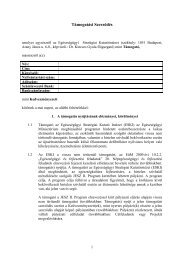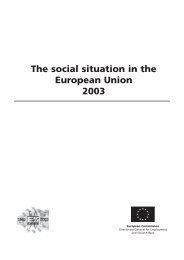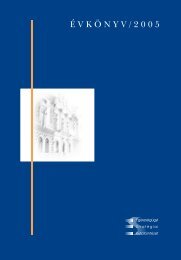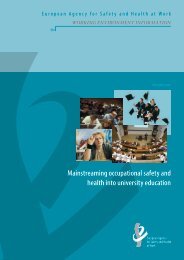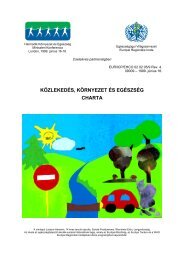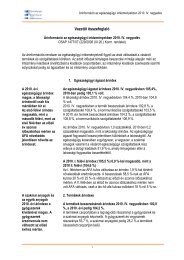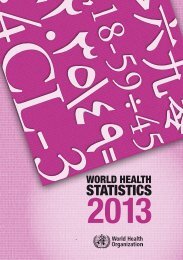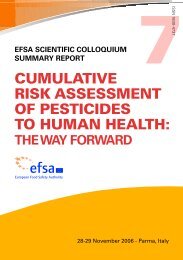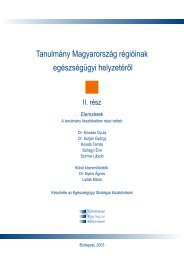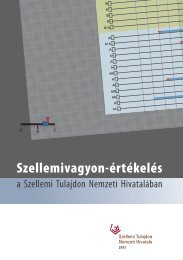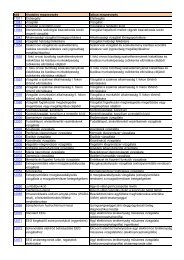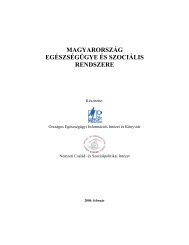WHO Technical Report Series, No. 981 - World Health Organization
WHO Technical Report Series, No. 981 - World Health Organization
WHO Technical Report Series, No. 981 - World Health Organization
Create successful ePaper yourself
Turn your PDF publications into a flip-book with our unique Google optimized e-Paper software.
Annex 2<br />
3.3 Knowledge of the product and process<br />
QRM should be based on knowledge of the product or processes concerned,<br />
according to the stage of the product life-cycle.<br />
A flow diagram may be helpful, covering all operations and controls in<br />
the process under evaluation. When applying QRM to a given operation, the<br />
steps preceding and following that operation should also be considered. A blocktype<br />
diagram may be sufficiently descriptive. Amendments to the flow diagram<br />
may be made where appropriate, and should be documented.<br />
3.4 Risk assessment<br />
When risk assessment is conducted, safety and efficacy need to be considered in<br />
addition to the quality concerns.<br />
During the assessment all the risks that may reasonably be expected to<br />
occur when conducting the activity under evaluation should be listed. This is<br />
usually done when the risk assessment is made for the first time, i.e. initiated,<br />
when there is a change or a concern and may also be applied to existing processes.<br />
An analysis should be conducted to identify which risks it is essential to eliminate<br />
or to reduce to acceptable levels.<br />
A thorough risk assessment is required to ensure effective risk control.<br />
Risk assessment should review the materials, operations, equipment, storage,<br />
distribution and intended use of the product. Typically a list of the potential<br />
risks (biological, chemical and physical) which may be introduced, increased or<br />
controlled in each area should be drawn up. In the risk assessment the following<br />
basic questions should be addressed:<br />
■■<br />
■■<br />
■■<br />
■■<br />
What might go wrong?<br />
What is the nature of possible risks?<br />
What is the probability of their occurrence and how easy is it to<br />
detect them?<br />
What are the consequences (the severity)?<br />
It should then be decided which of the potential risks should be addressed<br />
by the QRM activities and what control measures, if any, should be taken for<br />
each risk. If a risk has been identified at a step where control is necessary for<br />
safety, and no control measure exists at that step or at any other, the product or<br />
process should be modified at that step, or at an earlier or later stage, to include<br />
such a control measure. More than one control measure may be required to<br />
control a specific risk and more than one risk may be controlled by a specified<br />
control measure.<br />
Options for risk assessment methodologies are described in section 5.<br />
71



